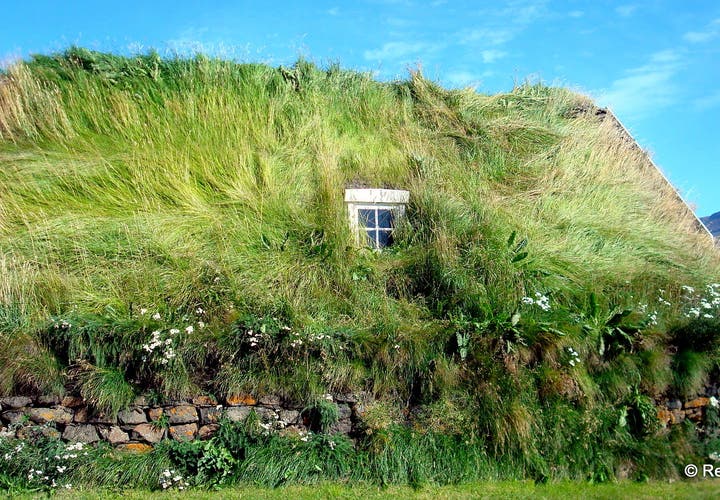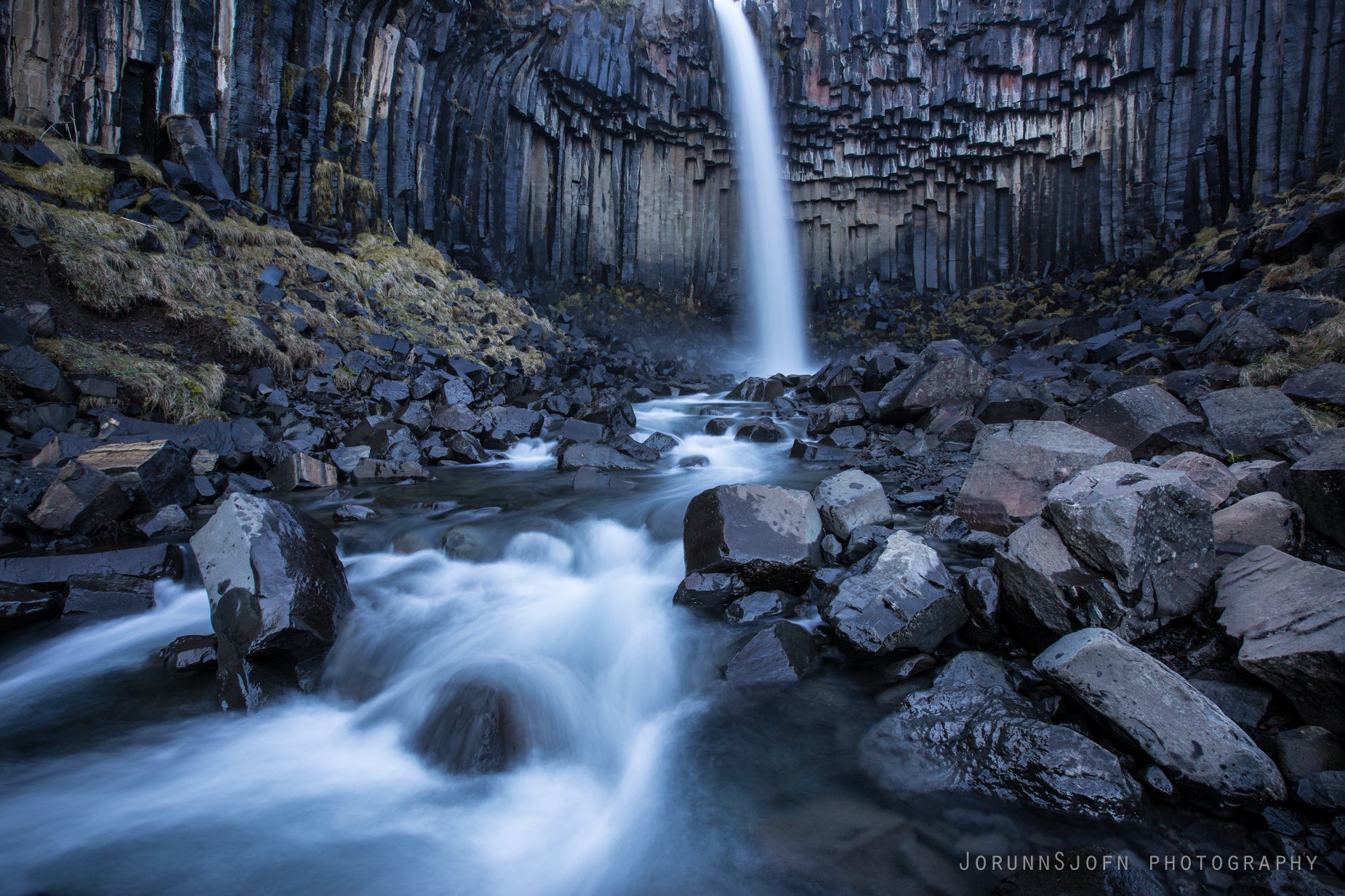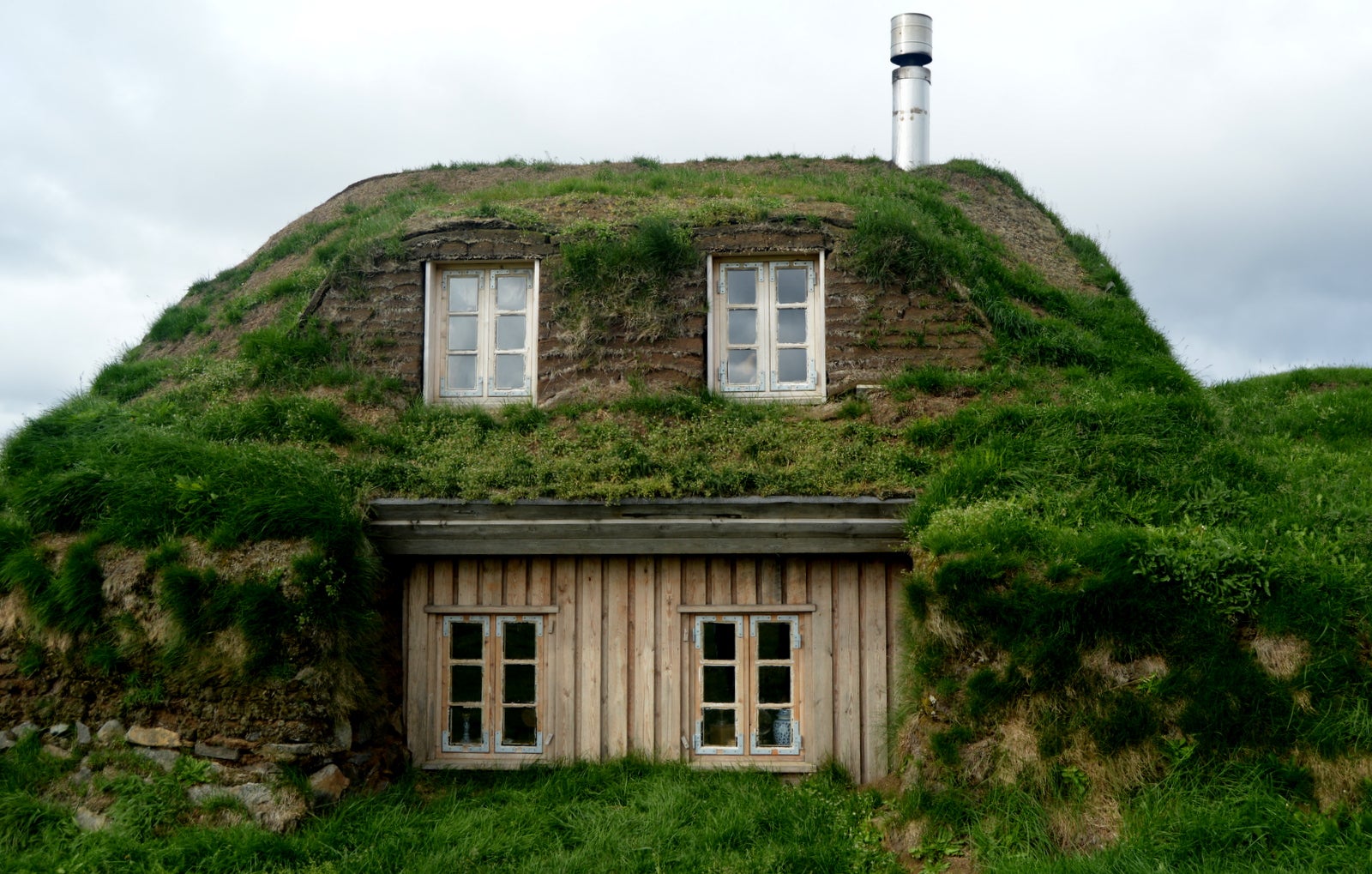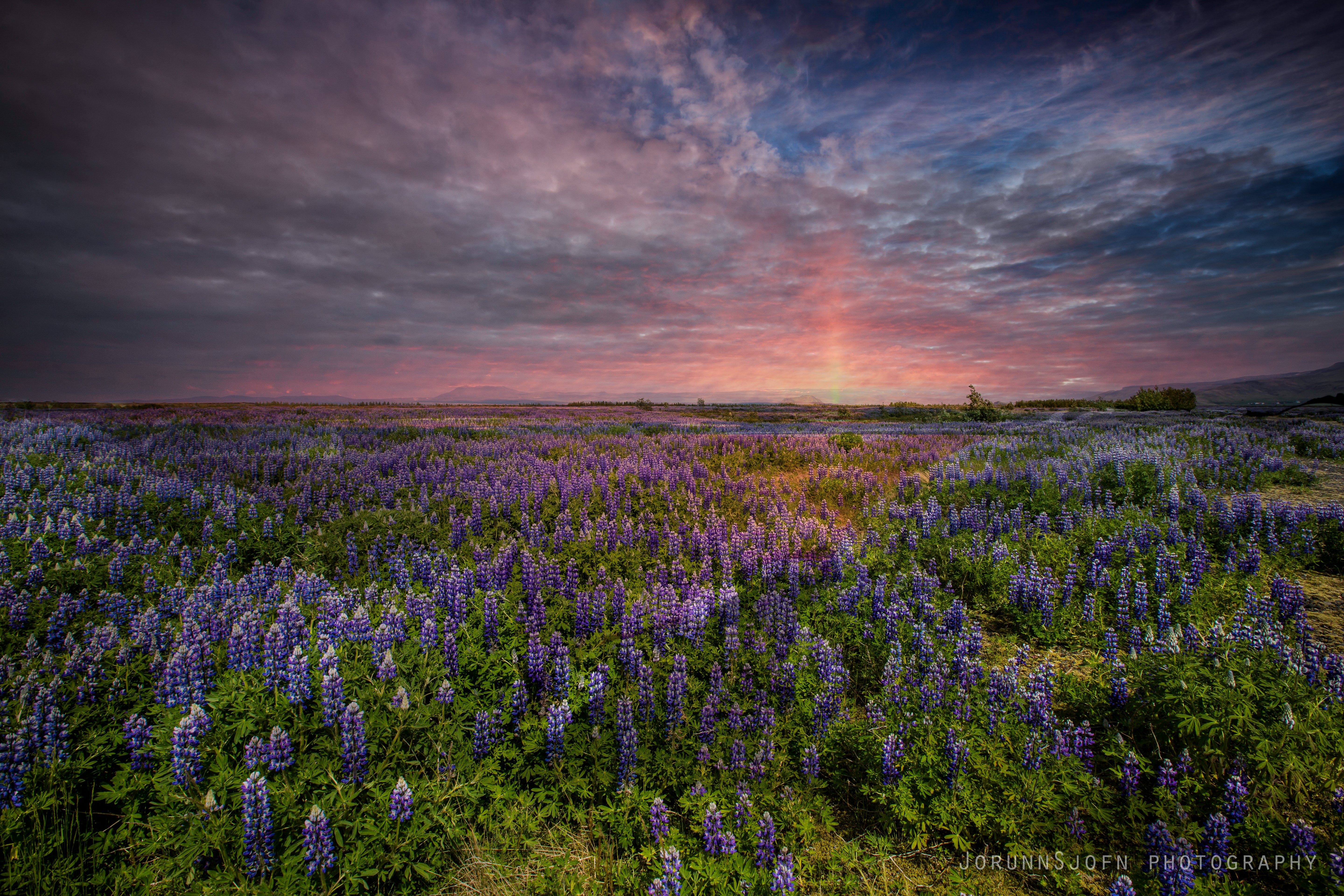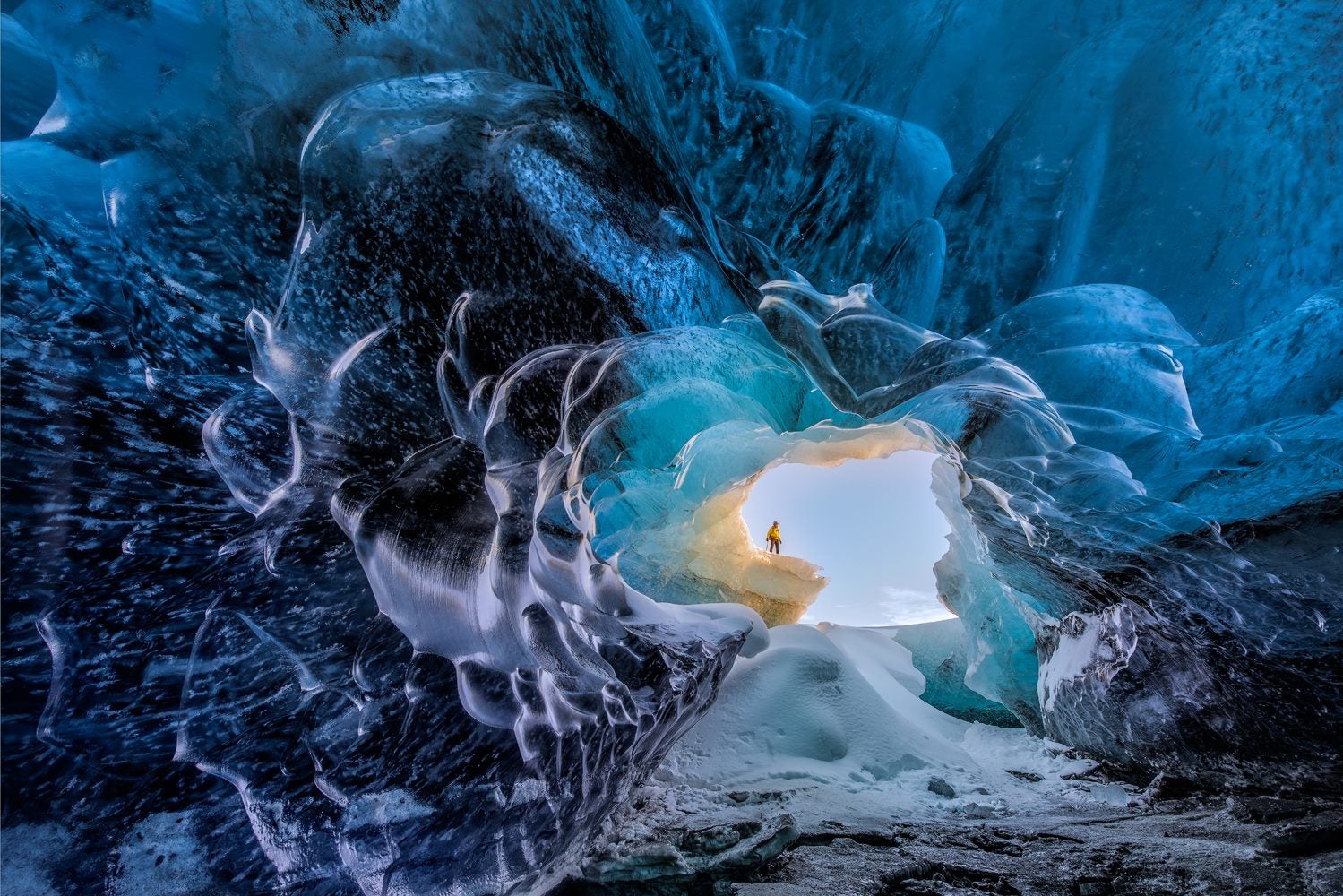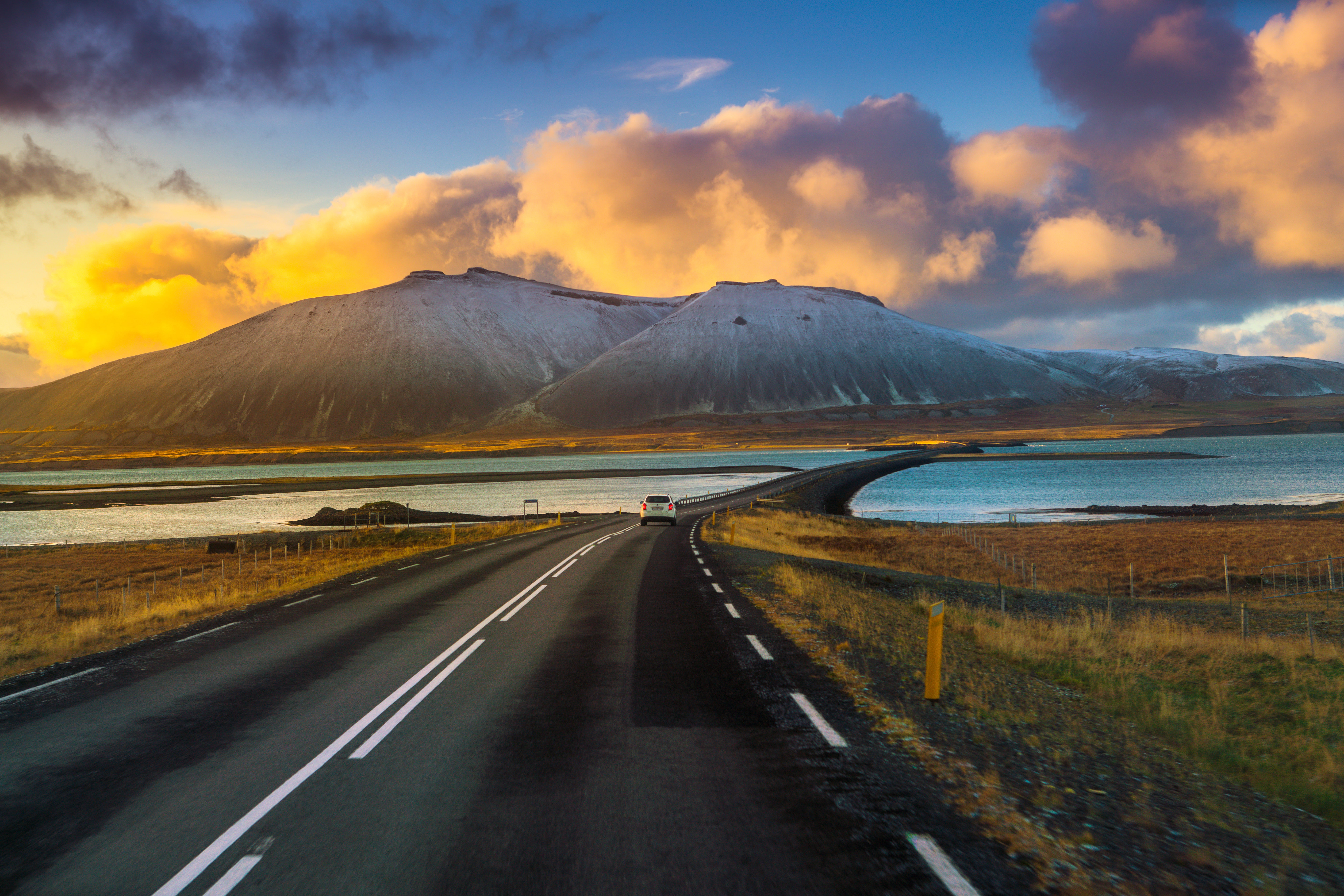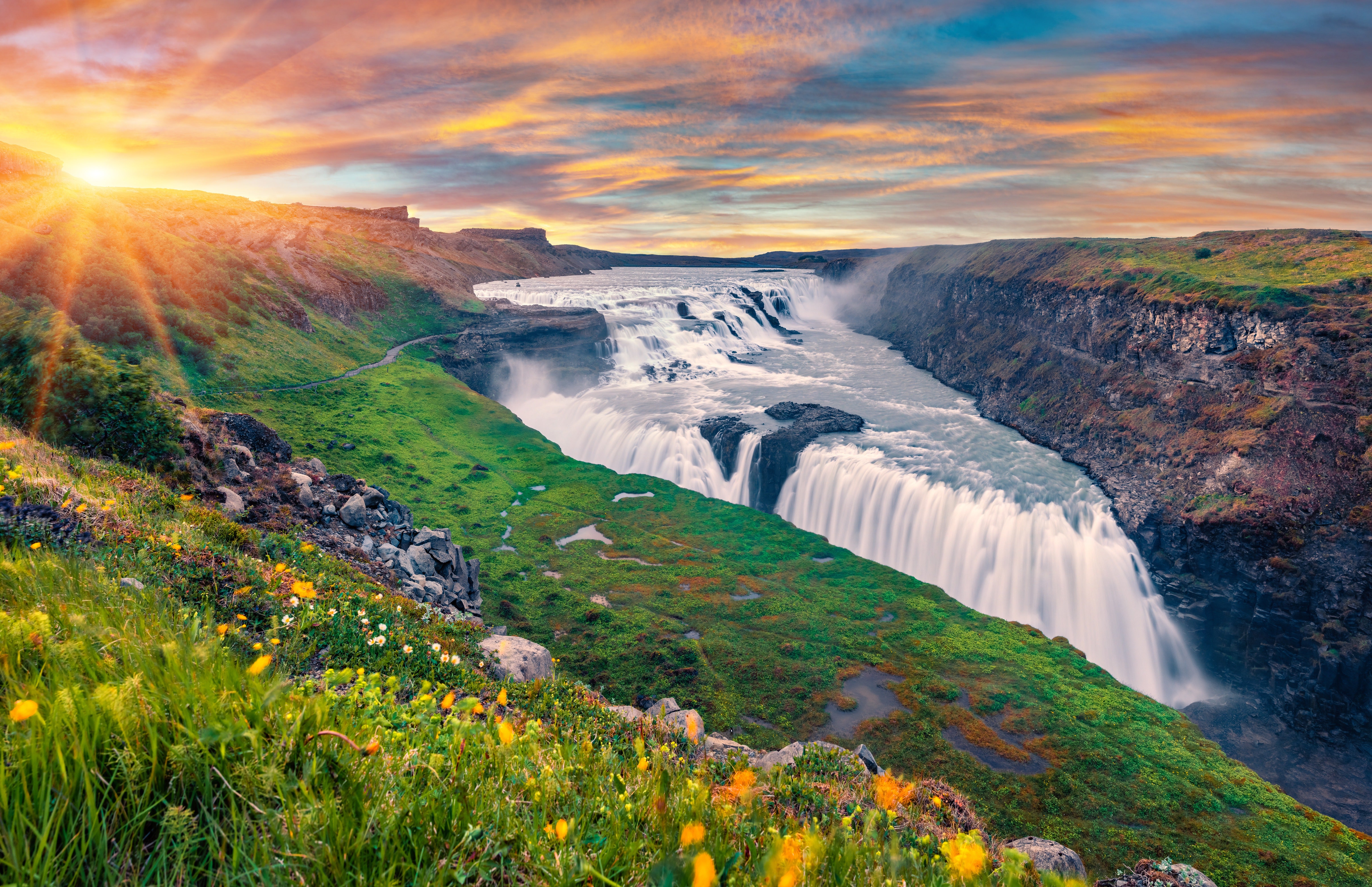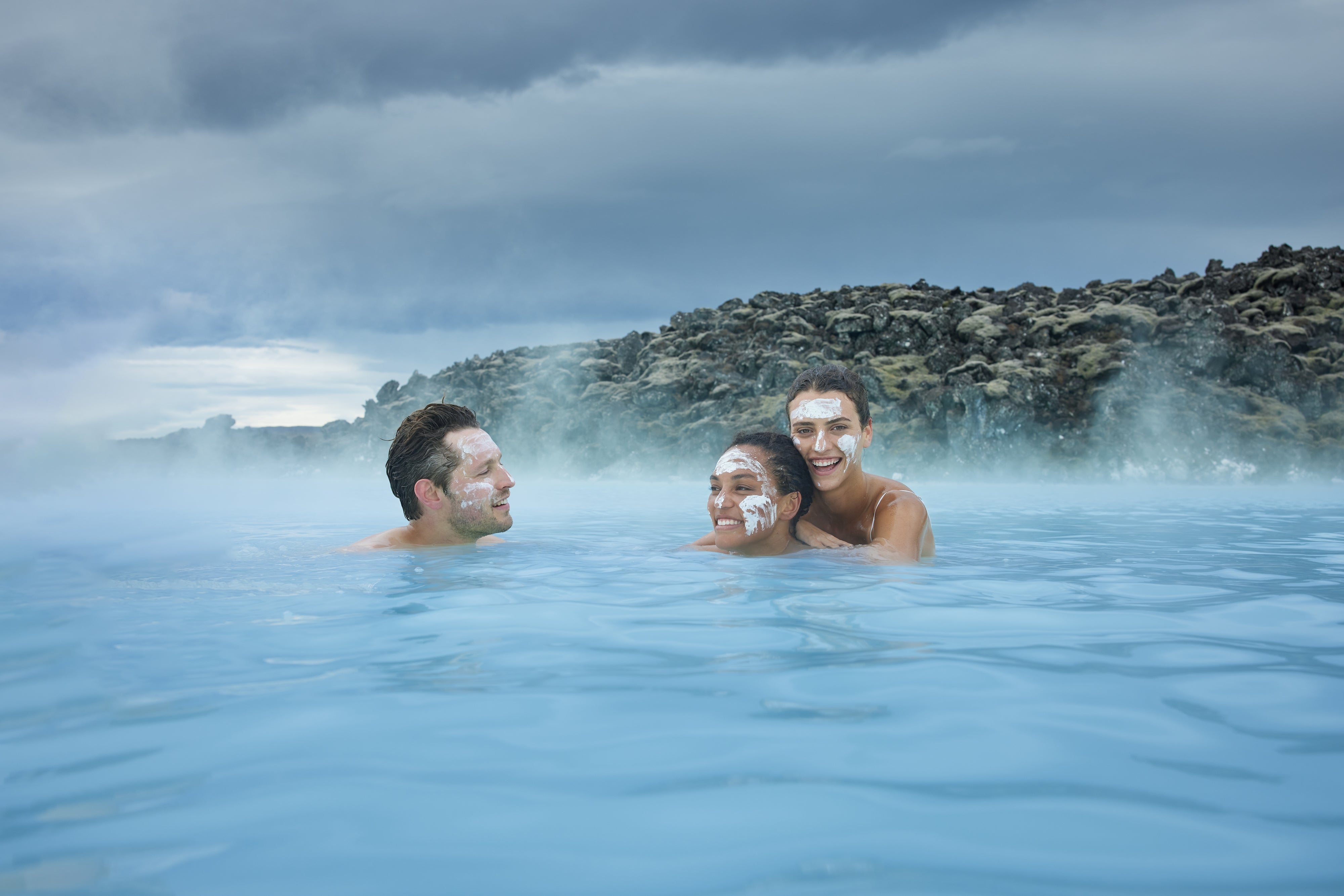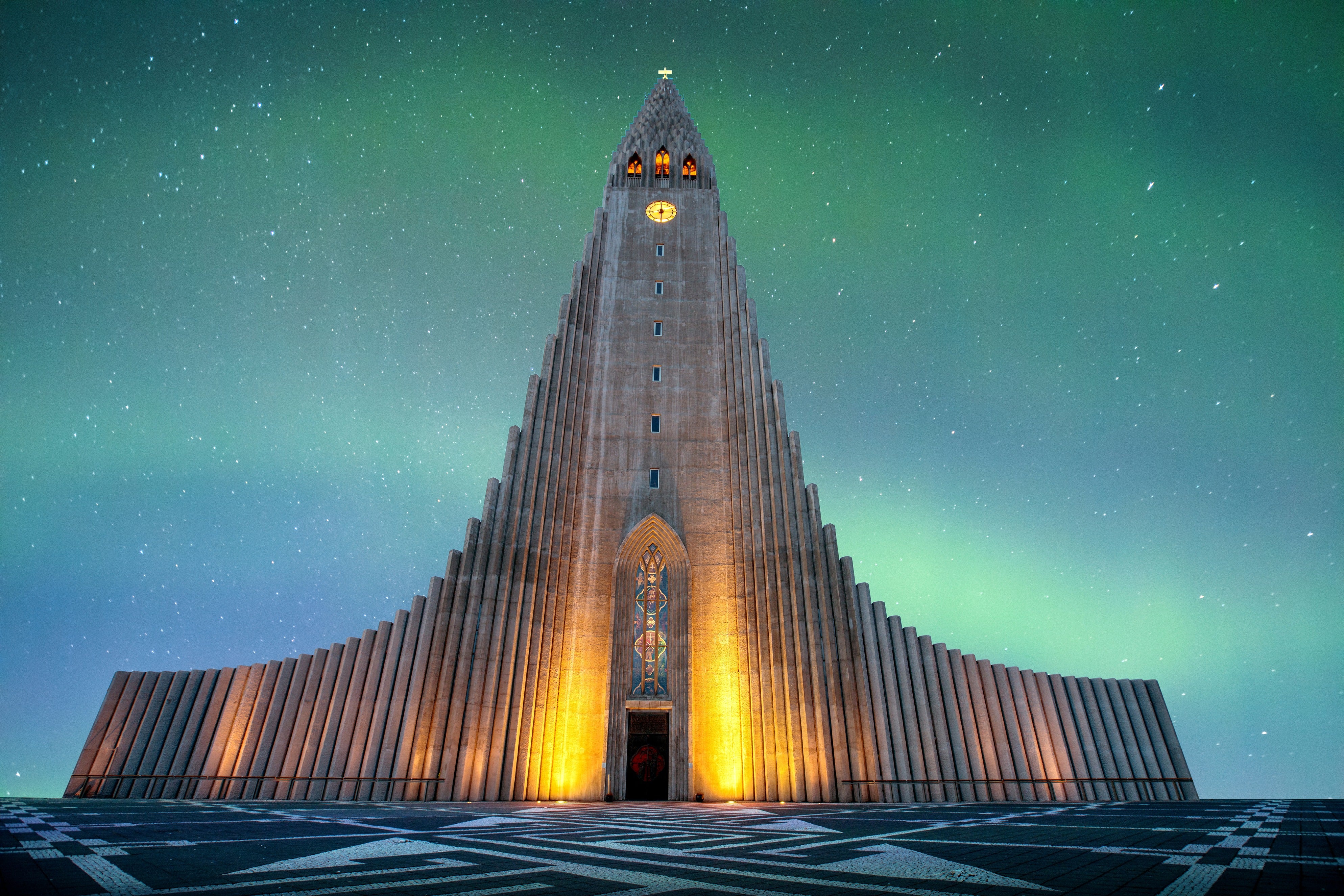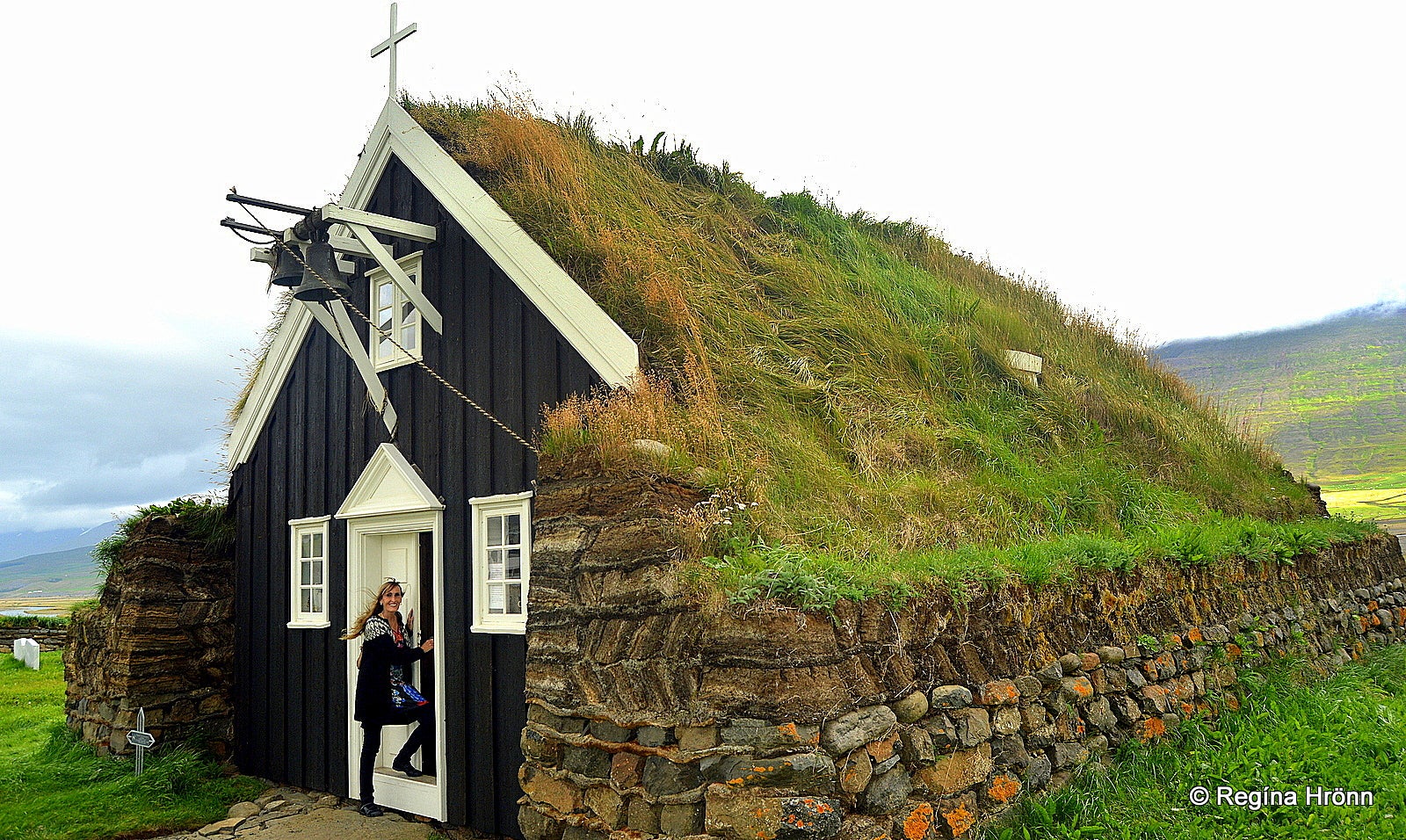
Saurbæjarkirkja is one of only 6 turf churches left in Iceland and the largest one of the original turf churches.
Let's have a look inside.
Top photo: Entering Saurbæjarkirkja church
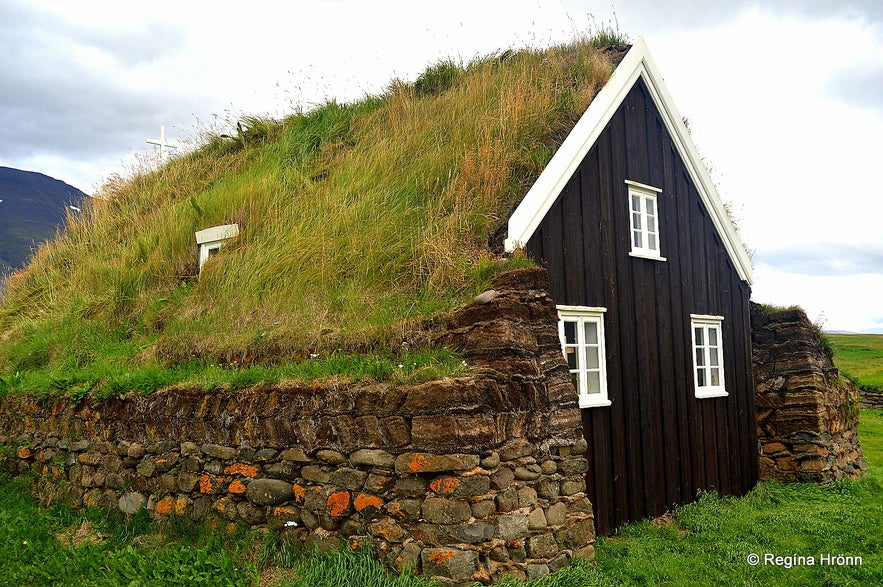
Saurbæjarkirkja church
This lovely turf church, which was erected in 1858 by Rev. Einar Thorlacius (1790-1870) and the noted carpenter Ólafur Briem, can fit around 60 people.
Saurbæjarkirkja is made of turf, rock, and wood. The walls are very thick and the roof is covered with turf. But as you enter the church you think you are in a timber church as it is all paneled on the inside.
All the Icelandic churches used to be turf churches until the mid-19th century when wood became the preferred building material, and later cement churches were built.
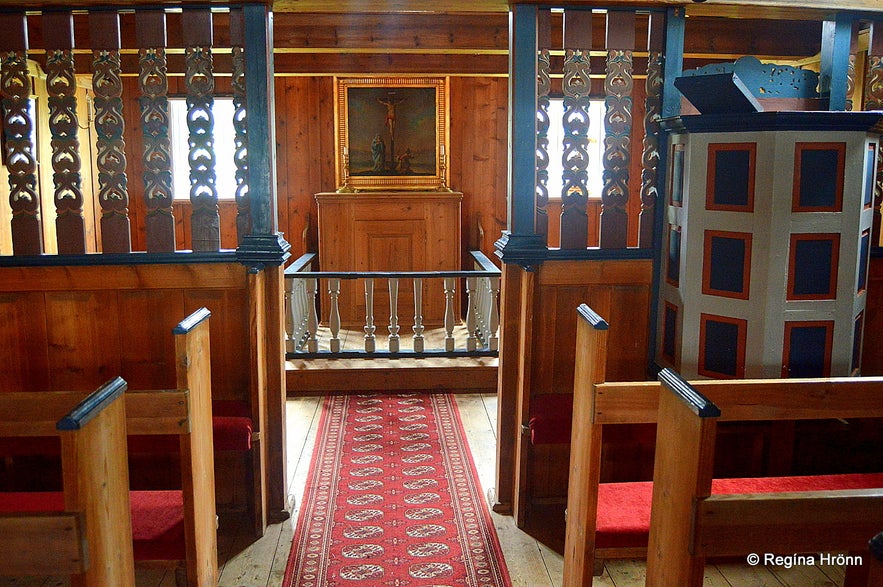
Inside Saurbæjarkirkja church
A concrete cellar was added in Saurbæjarkirkja in 1960 and in 2003 the turf church was reconstructed.
It is a pity that so few of these beautiful turf churches have remained. In my eyes, they are a national treasure and should be treated with the respect and care that such treasures deserve.
So let's tread lightly when visiting these turf churches. Many of these old delicate churches have been closed to visitors by now as they have to be preserved.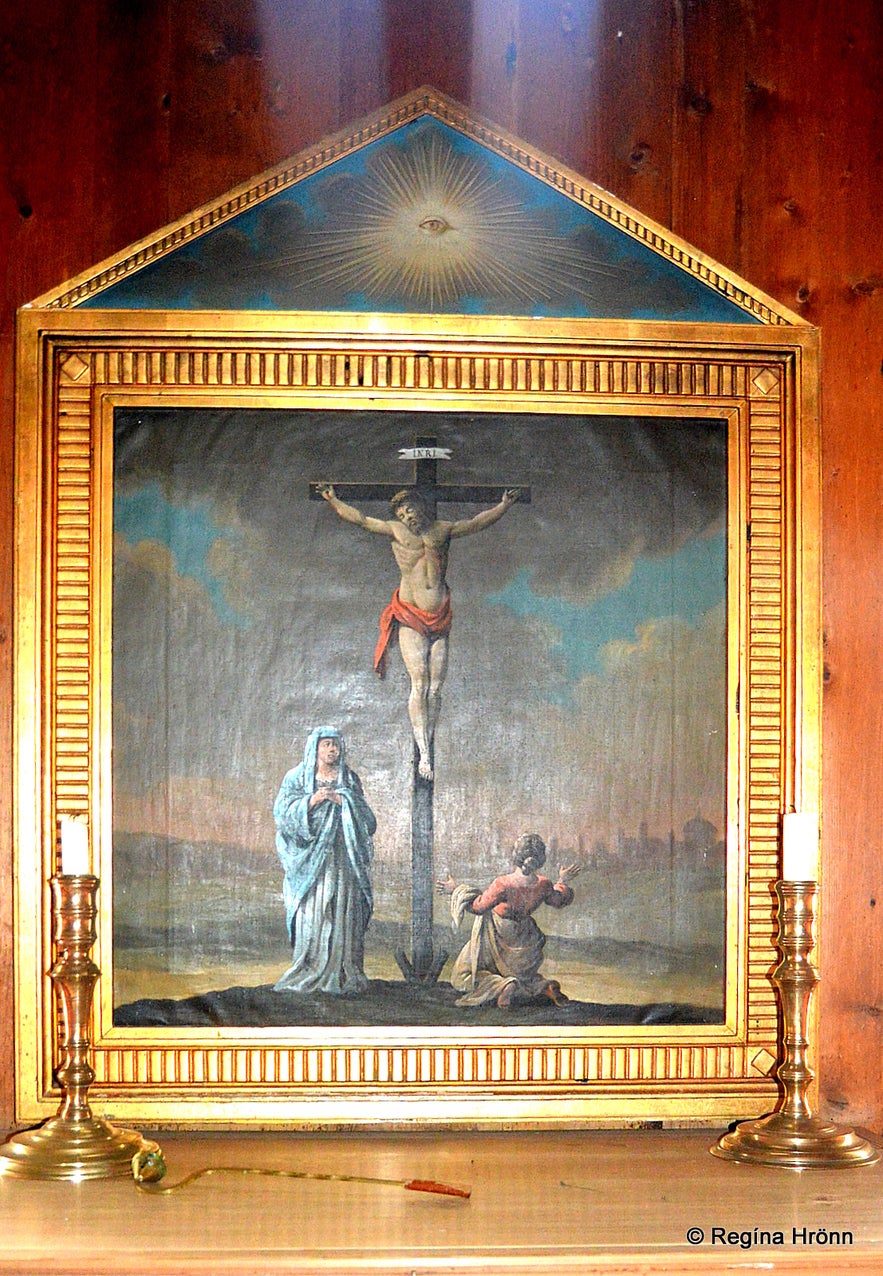
The altarpiece in Saurbæjarkirkja turf church
There have been churches on this spot since the early days of Iceland, and a convent was founded here around the year 1200.
Unfortunately, there are limited sources available on that old convent.
The churches here on this spot were dedicated to St. Nicolas and St. Cecilia.
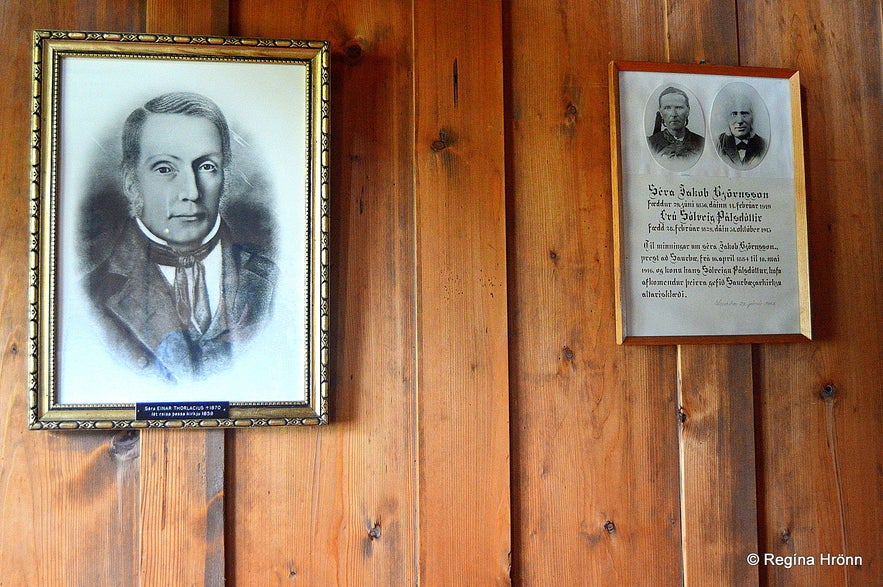
Inside Saurbæjarkirkja turf church
Most of the churches in Iceland are closed, but the key can usually be acquired from the farmer or there is a phone number with information in the window.
The key for Saurbæjarkirkja can be acquired in the summertime at the Smánunasafnið Museum below the church. Or at least that was the case when I visited it. It might be closed by now.
Smámunasafnið Museum is also well worth a visit with its myriad of things on display.

Colourful Saurbæjarkirkja turf church
Turf churches have no bell towers and the bells usually hang from the front gable, but some of them have lychgates. The bells of Saurbæjarkirkja hang from the front gable.
Saurbæjarkirkja has belonged to the National Museum of Iceland since 1962 and is declared protected.
The 4 other turf churches in Iceland are Víðimýrarkirkja turf church in North Iceland, Grafarkirkja turf church in North Iceland, Núpsstaðakirkja turf church in South Iceland, and Hofskirkja turf church in Öræfi in South-East Iceland.
Víðimýrarkirkja is a museum in the summertime, but most of the other churches can no longer be visited, i.e. inside.
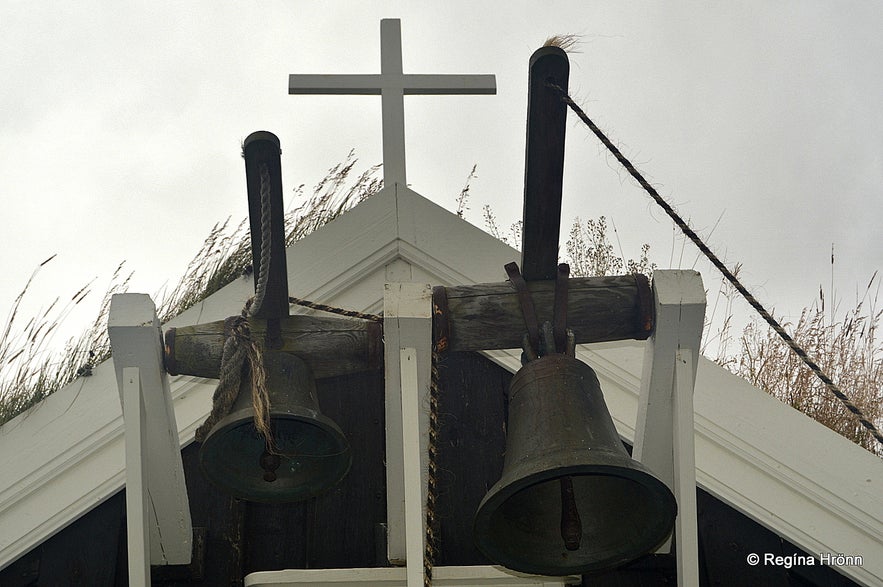
Saurbæjarkirkja church bells
There is a 6th turf church, Árbæjarkirkja turf church, at Árbæjarsafn Museum in Reykjavík, but that turf church was reconstructed from an old church at Silfrastaðir in North Iceland.
I have written a travel blog about most of these turf churches, seeing that I am extremely interested in turf houses and turf churches in my country.
It is well worth going almost to the end of Eyjafjörður valley to see this biggest turf-church in Iceland. And if you are interested in beautiful churches like I am, then there are many more historical churches to visit in Eyjafjörður:
Eyjafjörður Fjord in North Iceland - Historical Churches

Saurbæjarkirkja turf church
Saurbæjarkirkja turf church is located some 409 km away from Reykjavík, Iceland's capital city, and some 30 km south of Akureyri, the capital city of North Iceland.
The church is on the right-hand side of road 821 close to the historic Grundarkirkja church (which is by road 829).
You can either rent a car in Reykjavík and drive up north to visit Saurbæjarkirkja and Eyjafjörður fjord. Or fly up to Akureyri and rent a car up north.
Have a lovely time in Eyjafjörður up north :)
Ref:
Kirkjur Íslands
